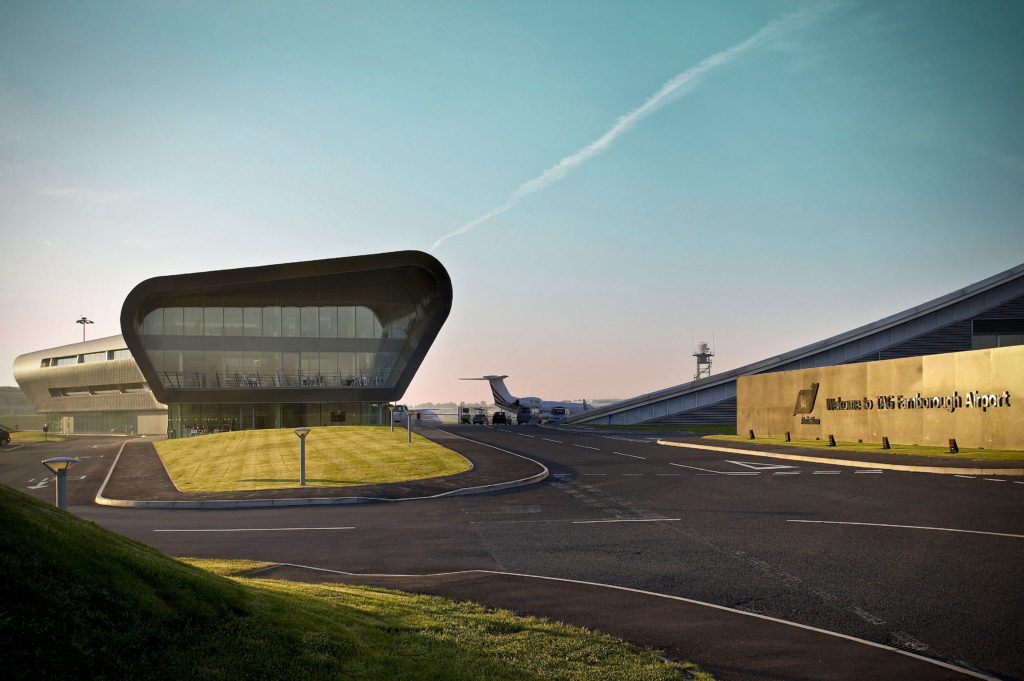TAG Farnborough became the first carbon neutral business airport in the world this year. Miles Thomas, environment manager at the airport, talks to BAI about how Farnborough is maintaining the status and the airport’s other sustainable efforts.
When did TAG Farnborough start working towards becoming carbon neutral?
We started process to become carbon neutral in 2008. The most important thing at the very beginning is to set your scope and understand what’s your responsibility and what falls into someone else’s responsibility. It’s really important with carbon calculating to make sure that there aren’t any areas where things can get double counted ie counted by two parties working side by side and therefore get counting twice or, probably worse than that, having a gap in between two parts of an operations/two companies because gaps or double counting upset the figures.
As an airport, our footprint includes our infrastructure, the buildings we operate, the equipment and facilities we provide and all the activities our staff undertake at the airport. Sitting outside of that, is aircraft operations, which is with operators. Know what your footprint encompasses and from that you can start to build towards learning what your baseline footprint is and then trying to reduce it.
What was the most challenging change that had to be implemented?
To get anything moving like this from a company, you really need support from the very top. For us, our board of directors had to be interested and committed to wanting to do this because it is a strategic move for the airport. Every level of the company then needs to be striving for the same goal, such as the operational staff on the airfield. Everybody has their part to play and without everyone pulling in the same direction, you can’t get the maximum result which is what we were looking for.
It is a big challenge to make sure everyone understands what you’re doing, why you’re doing it, what the benefits are and how it helps the company. When you’re in the midst of the work, it might not always be apparent what the overall benefits are when there’s still a lot of work and investment to be done. We needed to demonstrate to our community and stakeholders that we are committed to achieving best environmental performance and carbon footprint is just one small area that contributes to that.
What else did you have to change or add to your operation in the quest to be carbon neutral?
We have a mix of new facilities built around 2004, and then older facilities that we inherited from the MOD airport from which TAG developed, such as hangars that were built in 1940s and 1950s. That meant there were a range of things to implement. Some were as simple as lagging the hot water pipes for heat loss reduction. There was a lack of insulation in the hangars so we implemented new technology called destratification fans, which hang in the roof of hangar and push hot air that rises back down to the bottom of the hangar. This reduces heat loss from the uninsulated parts of the roof of the building. This helps us operate what were essentially old and inefficient buildings to operate them much more efficiently.
On a bigger scale, we’ve been going through every single building on site and upgrading all the lighting both inside and outside. We got rid of halogen fluorescent lighting which is old and inefficient and produces a lot of wasted heat and replaced it with LED technology which is, although extremely expensive, can save up to 80% of electricity usage. We’ve also started work on the runway lighting. This has had a huge impact on our carbon footprint as it has significantly reduced our electricity usage on our site.
We knew we were going to work towards carbon neutrality over a long period of time, so we weren’t in a rush to reach it. We wanted to do it slowly, thoughtfully and properly. This meant looking at absolutely everything. Technology is always developing in ways that can help you meet those reduction targets, but you also have to look at how the staff operate on site, how they interact with technology you have, how third parties get to learn about how their activities impact the process.
You’ve got to have training programs and procedures and high-level policies that direct people in a way that helps them understand that sustainable performance is extremely important to us. You have to put all of that in a package and we looked at the breadth of our operation and ensured we could address every part of the operation from the large to small.
Why was it important to TAG Farnborough to become carbon neutral?
To be the first business airport is fabulous and we’re extremely proud of that. Lots of commercial airports have taken up carbon accreditation. Globally, we are the 39th airport to achieve neutrality and that puts us on a platform with large commercial airports. It’s great for us to be on that same platform as a relatively small business aviation airport. It sits with our company ethos to be the first. We tried to not just meet the regulations but go beyond them and demonstrate that our environmental performance is at the heart of our operation.
We’ve always tried to do what we say we are going to do. We released a 10-year masterplan in 2009 and within it, we set out where we thought the business was going to go and what our intentions and aspirations were going forward. A part of that masterplan, we had a sustainability charter that went through and listed key areas where we were going to try and drive sustainable improvements and business operations. This covered different areas that came under environmental management. In addition to carbon footprint, this included noise, air quality and waste management and all the other key things related to airport management.
What advice would you give to airports striving to become carbon neutral?
The communication, getting the company ethos on board and the organization of staff is really important at the start and that takes more time than simply investing in technology. Unless you’ve got everyone trying to achieve the same thing, it’s very hard to make the differences or get the greatest efficiency you’re looking for.
One of the big advantages we found was to run the carbon footprint reduction work alongside an Environment Management System (EMS). Our EMS is a structured way of dealing with environmental issues at the airport and that is a globally standardized process from the International Organization for Standardization (ISO). As you work through developing the EMS, it gives you all the communications pathways and the organization from top management to operational staff and that gives you the network to be able to get the company working towards the right direction ready for carbon footprint reduction or any other scheme you’re hoping to run.
Before you do any kinds of improvement work, you need to be able to make sure you can monitor those changes. Getting your monitoring and data together to get that first baseline footprint is also really important, such as knowing how much electricity, gas, liquid fuel and other elements you use that contribute to the carbon footprint. Having robust monitoring schemes for those is important before you start making the changes otherwise you lose the benefit of understanding or quantifying those benefits that you’re realizing.





